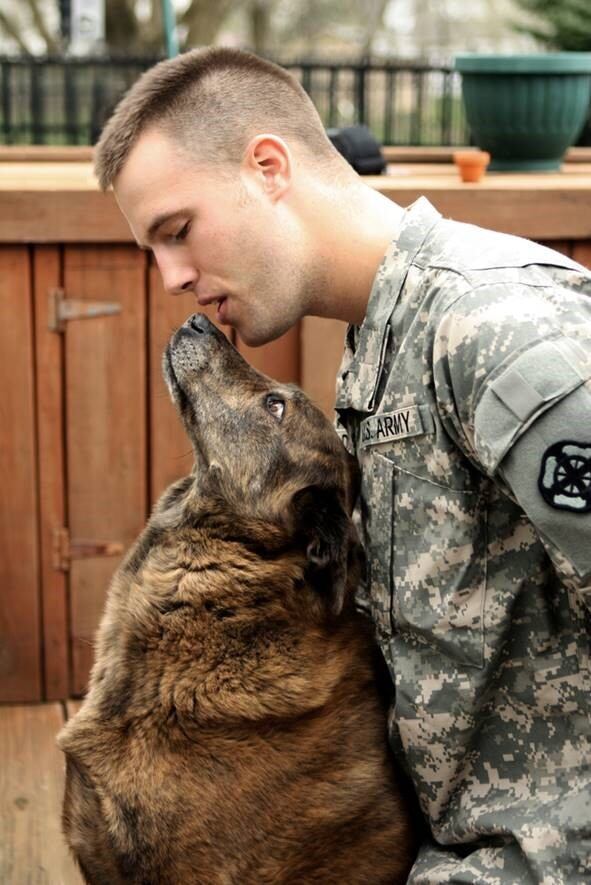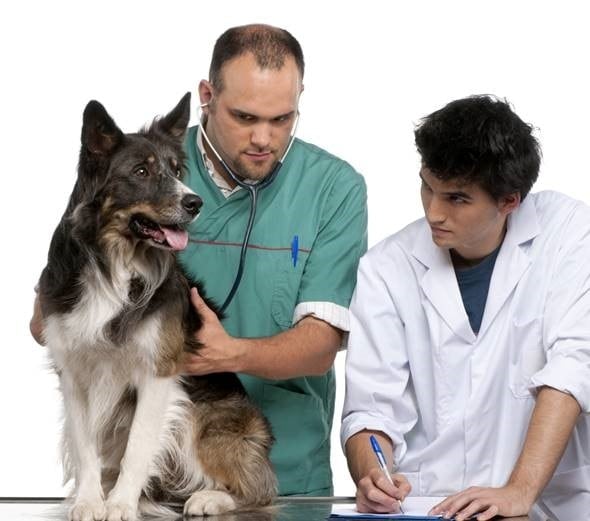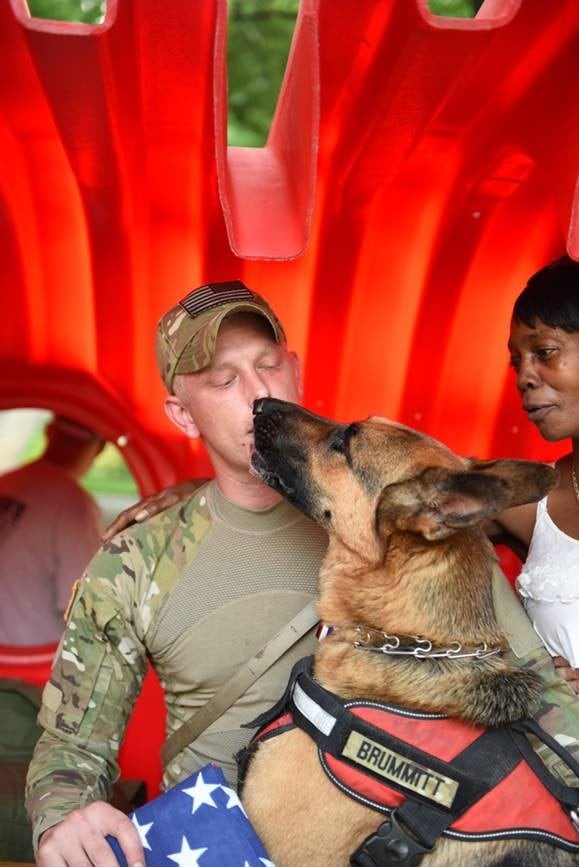Bring up the subject of military working dogs (MWDs) with almost anyone, service member or civilian, and you'll hear about admiration and affection for these brave, hard-working and loyal animals. If you get to speak with troops or veterans about the blessing of being reunited with and adopting their retired MWDs, you'll know just how much it means to them. The bond between a service member and a working dog is genuine and strong.

Reuniting military dogs with their handlers is about healing these veterans — both human and canine — and their families. The dogs and their humans provide each other a sense of comfort and safety. This special kind of companionship and unconditional love helps troops work through their fears as they transition into everyday civilian life at home. Often the dogs suffer with some form of C-PSTD (canine post-traumatic stress disorder) themselves, and also need support to successfully transition into non-military life.
While the human handlers of these retired MWDs have the first right of adoption, there are situations where either tracking down the dog's handler is a challenge, or the soldier cannot for some reason adopt their dog. In those cases, they go to other loving homes. Willingness to adopt retired MWDs is not a problem; there are plenty of grateful individuals and families available to take them in. Regardless of who adopts these special animals, post-adoption veterinary costs are something the adoptive family must be prepared for. Providing proper care throughout the life of any pet can be costly; this is especially true for dogs who've worked in combat zones and have special needs as a result.

According to the nonprofit organization Gizmo’s Gift, "Working dogs are typically only retired for medical reasons. These medical issues range from hip dysplasia, PTSD, severe allergies, cancer, or degenerative myelopathy and require ongoing veterinary care once they have completed their service. The majority of K9s retiring are between the ages of 8 and 12 years old and have various special needs." Two of the most common breeds of dogs working in the military are German Shepherds and Malinois — both wonderful breeds, but more likely to experience joint and cataracts issues than many others. Each of these ailments, including those mentioned by Gizmo’s Gift, can run well into the thousands of dollars in veterinary care.
Click hereto find out how LendingPoint can help cover unexpected costs when caring for your pet.
Fortunately, there are resources for these special dogs and their humans. Several non-profit organizations exist to provide resources so that MWDs and other working dogs are well-cared for in their retirement years. In addition to Gizmo's Gift, they include Mission K9 Rescue, The U.S. War Dogs Association, Inc. and Combat Canines

We all owe a large measure of gratitude:
- to the military working dogs who worked (and those who continue to work) bravely and loyally alongside our country’s soldiers
- to the human handlers of these wonderful dogs
- to the individuals and families who adopt and care for retired MWDs
- to the non-profits and their generous supporters/volunteers who help provide resources to support military dogs
For photos of these brave dogs and their handlers, check out these wonderful pictures from Kael Weston's book, The Mirror Test: America at War in Iraq and Afghanistan.
If you're looking for financial resources to help pay for veterinary needs beyond what a nonprofit or your current bank balance can support, please visit us at www.lendingpoint.com. Find out how we can help you and your furry best friend!



